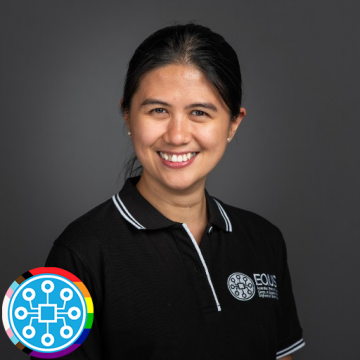1kQubit Flagship
1KQubit Flagship
In the 1kQubit flagship research program, we’re developing the theoretical foundations for a useful, fault-tolerant quantum processor.
Such a device requires around 1,000 logical qubits, built using around 1,000 physical qubits and based on technology that is expected to be available in the next 5–10 years.

A foundation for useful quantum computers
The race is on to build the first ‘useful’ quantum computer. Small-scale quantum computers already exist, such as IBM’s Quantum System One and Google’s Sycamore. But these devices have only 10s or 100s of qubits; a ‘useful’ quantum computer requires 1,000s of qubits.
A key goal is to demonstrate ‘absolute quantum advantage’, by proving that quantum computers are faster than the best available classical supercomputers. This is done by performing benchmark tasks, but these tasks are designed only to test the software, they have few real-world applications.
To come up with useful applications, the noise that affects quantum systems needs to be reduced. Noise—for example, from interactions between qubits and their environment—introduces errors by causing information to be lost or corrupted. When quantum computers with millions of high-quality qubits are available, methods from computer science will be able to reduce the effects of noise. But there is a gap.
Soon, we’ll have quantum computers larger and better than the current ones, but not yet good enough for the methods from computer science to work. In this regime of a few thousand qubits, all the details of the structure of the noise and of the physical qubit are important. Therefore, we need to bridge methods from computer science with methods from engineering and physics to tailor hardware-specific error mitigation and correction.
The 1kQubit flagship will develop such methods, setting the foundations for the future of quantum computation. It aims to:
- Develop next-generation qubits
- Design practical high-rate error-correction codes and fault-tolerant logic gates
- Build software, including high-threshold, efficient decoders, to perform error correction and logic gates
If successful, the 1kQubit flagship will create the foundations for error-corrected quantum computers and lead to the first demonstrations of scalable error correction.
The 1kQubit flagship launched at the start of 2021, as a spin-off from the Designer Quantum Materials research program.
Qubit Facts
Qubits are the basic building block of a quantum computer, like bits in classical computers. They can be built in many different physical ways. Any physical system that can be in at least two different configurations and follows the laws of quantum mechanics can be a qubit. Some qubits are better than others because they are less affected by noise. Logical qubits are composite qubits, built using many (perhaps as many as 1,000,000) elementary physical qubits. They behave like single qubits but perform much better than any of their constituents.
Similar methods have been used in classical computers, especially during periods of technological maturation. For example, in CDs, 4 logical bits consist of only 3 physical bits to allow some errors to be corrected. Although classical computers have largely gotten away without error correction, quantum computers are more sensitive to noise and so will probably require error correction even in the long term.
Major funding support

The Australian Research Council Centre of Excellence for Engineered Quantum Systems (EQUS) acknowledges the Traditional Owners of Country throughout Australia and their continuing connection to lands, waters and communities. We pay our respects to Aboriginal and Torres Strait Islander cultures and to Elders past and present.








